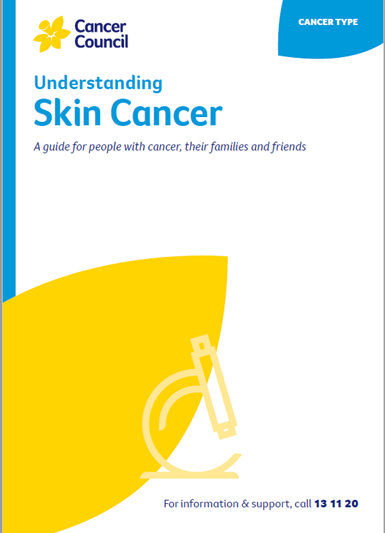- Home
- Skin cancer
- Treatment
- Photodynamic therapy
Photodynamic therapy
Photodynamic therapy (PDT) uses a cream that kills cancer cells when a special light is applied. It is used to treat sunspots, superficial basal cell carcinomas (BCCs) and squamous cell carcinoma (SCC) in situ (Bowen’s disease). This treatment may have a high cost.
How it’s done
After gently scraping the area to remove any dry skin or crusting, the doctor applies a cream to the skin. After 3 hours, light is used to activate the cream, either using an LED light or by indirect sun exposure (daylight PDT). An LED light is usually used on the area for about 8 minutes. The area is then covered with a bandage.
For skin cancers, LED PDT is usually repeated 1–2 weeks later. Daylight PDT works in a similar way – your doctor will give you instructions for how long to expose only the area with the cream to sunlight.
What to expect after
Side effects can include redness and swelling, which usually ease after a few days. PDT commonly causes a burning, stinging or tender feeling in the treatment area, particularly on the face. Your doctor may treat these side effects with a cold water spray or pack, or give you a local anaesthetic to help ease any discomfort.
Learn more about the different types of skin cancer.
→ READ MORE: Radiation therapy for skin cancer
Podcast: Making Treatment Decisions
Listen to more podcasts for people affected by cancer
A/Prof Victoria Mar, Director, Victorian Melanoma Service, Alfred Hospital and Monash University, VIC; Tracey Bilson, Consumer; Raelene Buchan, Consumer; Alison Button-Sloan, Consumer; Dr Margaret Chua, Radiation Oncologist, and the Skin Radiation Oncology team, Peter MacCallum Cancer Centre, VIC; Prof Anne Cust, Deputy Director, The Daffodil Centre, The University of Sydney and Cancer Council NSW, Chair, National Skin Cancer Committee, Cancer Council, and faculty member, Melanoma Institute Australia; A/Prof Paul Fishburn, Skin Cancer Doctor, Norwest Skin Cancer Centre, NSW and Faculty of Medicine, University of Queensland; Danielle Goss, Melanoma Clinical Nurse Specialist, Amie St Clair Melanoma (part of Melanoma Institute Australia), Wagga Wagga, NSW; Louise Pellerade, 13 11 20 Consultant, Cancer Council WA: Dr Shireen Sidhu, Head of Dermatology, The Royal Adelaide Hospital, SA; Dr Amelia Smit, Research Fellow – Melanoma and Skin Cancer, The Daffodil Centre, The University of Sydney and Cancer Council NSW; Dr Tony Tonks, Plastic and Reconstructive Surgeon, Canberra Plastic Surgery, ACT.
View the Cancer Council NSW editorial policy.
View all publications or call 13 11 20 for free printed copies.
